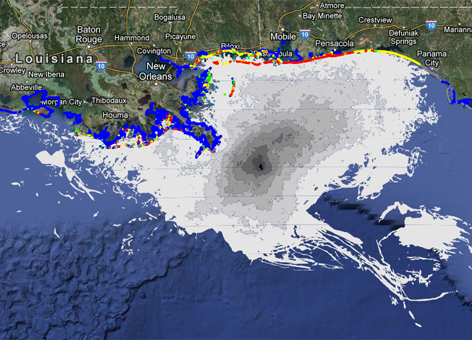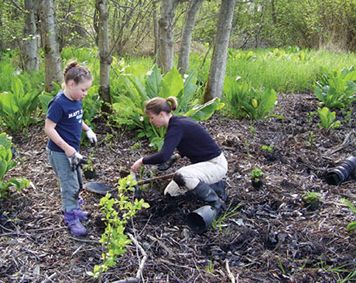Three Powerful Tools for Restoring the Gulf of Mexico
NOV. 7, 2012 — Volunteers. The Internet. Remote sensing.
NOAA's Office of Response and Restoration has been using all three to deal with the environmental aftermath of the 2010 Deepwater Horizon/BP oil spill in the Gulf of Mexico.
At Restore America's Estuaries' recent conference on coastal restoration [PDF], three members of OR&R showed how each of these elements has become a tool to boost restoration efforts in the Gulf.
Managing Data
OR&R scientist George Graettinger explained how responders can use remote sensing technology to assess damage after a major polluting event, such as the Deepwater Horizon/BP spill.
He has helped develop tools that allow both Geographic Information Systems (GIS) specialists and responders to visualize and manage the onslaught of data flooding in during an environmental disaster and turn that into useful information for restoration.
The principle tool for this work is OR&R's ERMA, an online mapping platform for gathering and displaying environmental and response data. During the Deepwater Horizon response, ERMA pulled in remote sensing data from several sources, each with its own advantages and disadvantages:
- MODIS and MERIS, NASA satellite instruments which each day captured Gulf-wide oceanic and atmospheric data and photos during the Deepwater Horizon response. While very effective in the open ocean, these sensors do not perform well in coastal waters [PDF].
- AVIRIS, another NASA sensor which took high-resolution infrared imagery from a plane to estimate the amount of oil on the water surface. Its disadvantages included being able to cover only a small area and being limited by weather conditions.
- SAR (Synthetic Aperture Radar), a satellite radar technology with super-fine spatial resolution. This technology actually transitioned from experimental to operational during the 2010 oil spill response in the Gulf of Mexico. While very effective at "seeing" through cloud cover to detect ocean features, SAR does not allow easy differentiation between thinner and thicker layers of oil on the water surface.
Managing People
"If you spill it, they will come," declared Tom Brosnan, scientist and communications manager for our Assessment and Restoration Division, at his presentation. "They" were the hordes of volunteers offering their eager help after the 2010 well blowout in the Gulf of Mexico caused the largest oil spill in U.S. waters.
Brosnan outlined some of the many challenges of using volunteers productively during an oil spill: legal liability, safety, technical training, logistics, reliability. The National Response Team, a federal interagency group coordinating emergency spill response, has taken a strategic approach to these challenges by creating guidelines for incorporating volunteers into response activities.
Brosnan also pointed out other great opportunities for harnessing the energy of concerned citizens for environmental restoration. One example was partnering with Citizens for a Healthy Bay in Tacoma, Wash. This is a community group soliciting and overseeing volunteer efforts to maintain already completed restoration projects making up for the decades of industrial pollution around Tacoma’s Commencement Bay.
Managing Communications
And no less important, explained NOAA communications specialist Tim Zink, is keeping people engaged after an oil spill is out of the public eye. For the Deepwater Horizon/BP spill, this has been a challenge particularly during the environmental damage assessment process. Zink described the difficulties of continuing to communicate effectively after initial interest from the media has diminished, of many different government trustee organizations trying to speak with one unified voice, and of the need for communication with the public to be framed carefully within the legal and cooperative aspects of the case.
He cited something as simple as a well-run online presence: the Gulf Spill Restoration website. This is a joint effort representing no fewer than three federal government departments (Commerce, State, and Interior) and five state governments. Well-organized and user-friendly, this website serves as a one-stop source of information about the ongoing effort to evaluate and restore environmental injuries in the Gulf of Mexico from the Deepwater Horizon/BP spill.
Among the closing speakers at the conference, Dr. Dawn Wright, chief scientist at GIS software company Esri, reinforced the importance of communicating "inspired science" to policymakers, communities, and other stakeholders throughout the restoration process. As a GIS specialist, she spoke to the many types of sophisticated spatial analysis that are available to anyone with a smartphone. The average person now has unprecedented access to geographic data on earthquakes, flu epidemics, and sea level changes. However, it is up to us to decide how we use these data-rich maps—and other tools—to understand and tell the story of environmental restoration.
 An official website of the United States government.
An official website of the United States government. 

